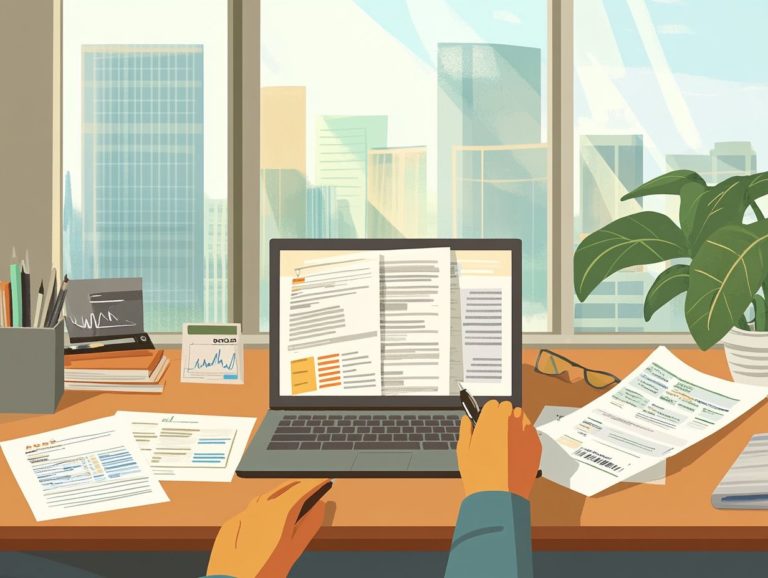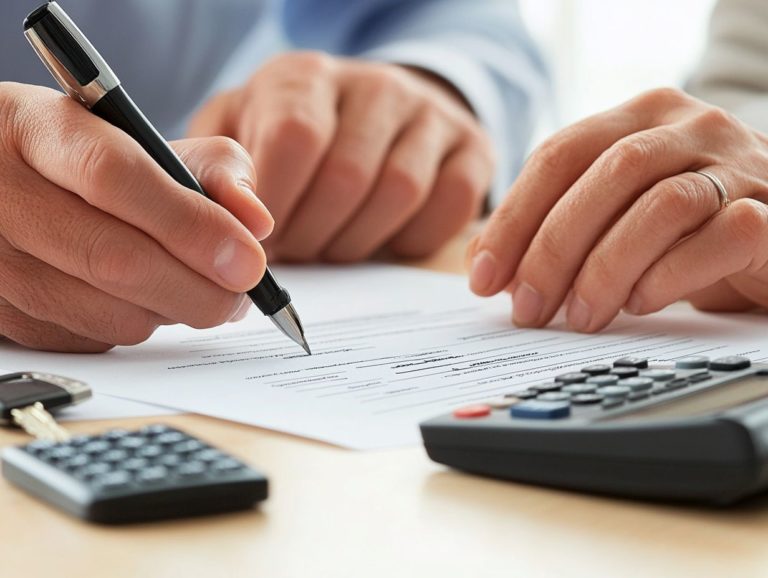Understanding Lease Payments: A Complete Guide
Lease payments are an essential part of renting property, whether you re securing a cozy home or a prime commercial space. This guide delves into the intricacies of lease payments, providing clear definitions and insights into how they are calculated.
You ll explore different lease agreements, including operating leases (short-term rentals) and capital leases (long-term rentals that may lead to ownership). You ll also familiarize yourself with essential terminology.
Additionally, discover valuable tips for negotiating favorable deals. Get ready to make confident leasing decisions that serve your needs well!
Contents
Key Takeaways:
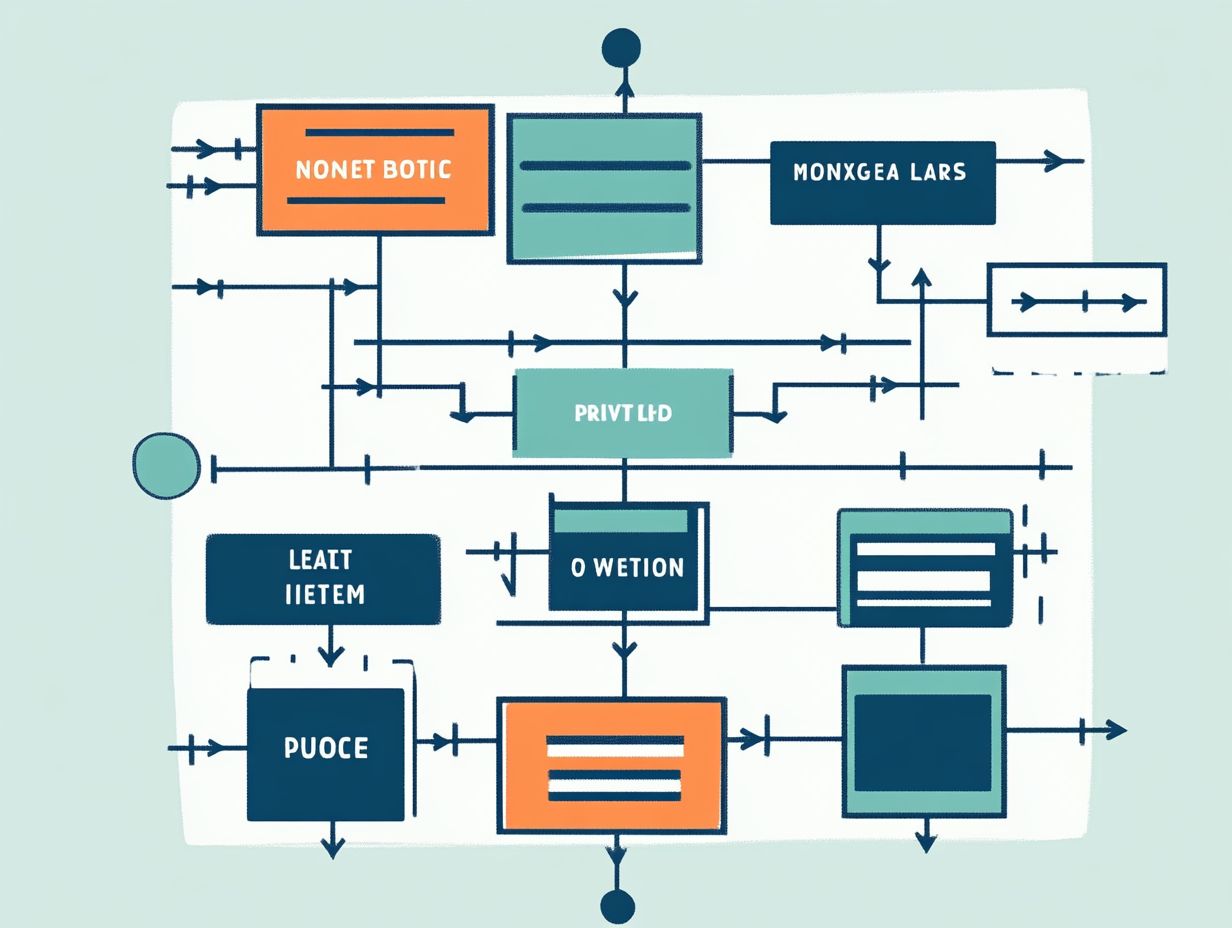
- Lease payments refer to the regular payments made by a tenant (lessee) to a property owner (lessor) for the use of an asset. There are two main types: operating leases and capital leases.
- The calculation of lease payments considers factors like the lease term, interest rate, and residual value. Negotiation can also impact the final payment amount.
- Understanding lease agreements helps determine the most suitable option for your situation. Always review the terms and conditions before signing.
What Are Lease Payments?
Lease payments are the regular amounts you pay to the property owner as part of your rental agreement. These payments often include more than the base rent, like maintenance costs and incentives.
According to accounting standards like ASC 842, it s crucial to record these lease payments as lease liabilities on your balance sheet. This ensures that both the asset transfer and the corresponding obligations are accurately reflected during the lease term.
Definition and Types of Lease Payments
Lease payments represent the financial obligations you must meet under a rental agreement, which can take various forms, including operating leases and capital leases.
Each type of lease payment has its unique structure and implications. Operating leases typically offer lower monthly payments and off-balance-sheet financing, providing flexibility without overwhelming long-term commitments.
On the other hand, capital leases often similar to loans usually result in asset ownership at the end of the term. This can be a strategic option for companies looking to build equity.
Grasping these classifications helps you craft effective rental agreements and plays a pivotal role in financial accounting and reporting. Understanding lease liabilities is essential because it can significantly influence your financial statements.
How Are Lease Payments Calculated?
To calculate lease payments, focus on key factors like the discount rate, residual value, and lease term. Understanding these components allows you to accurately determine your total obligations over the lease duration.
Factors Affecting Lease Payments
Several factors influence your lease payments, such as your credit score, anticipated cash outlay, and overall leasing costs related to the asset, including maintenance fees.
Market conditions are another crucial element. For instance, fluctuations in interest rates can impact the cost of financing your lease, leading to higher or lower monthly payments.
The type of asset you re leasing whether a vehicle, equipment, or real estate also affects lease structure, as different assets have varying depreciation rates.
Leasing incentives, like promotional offers or rebates from manufacturers, can enhance your negotiating power. These incentives can reduce the financial burden of monthly payments, making leasing a more attractive option.
Types of Lease Agreements
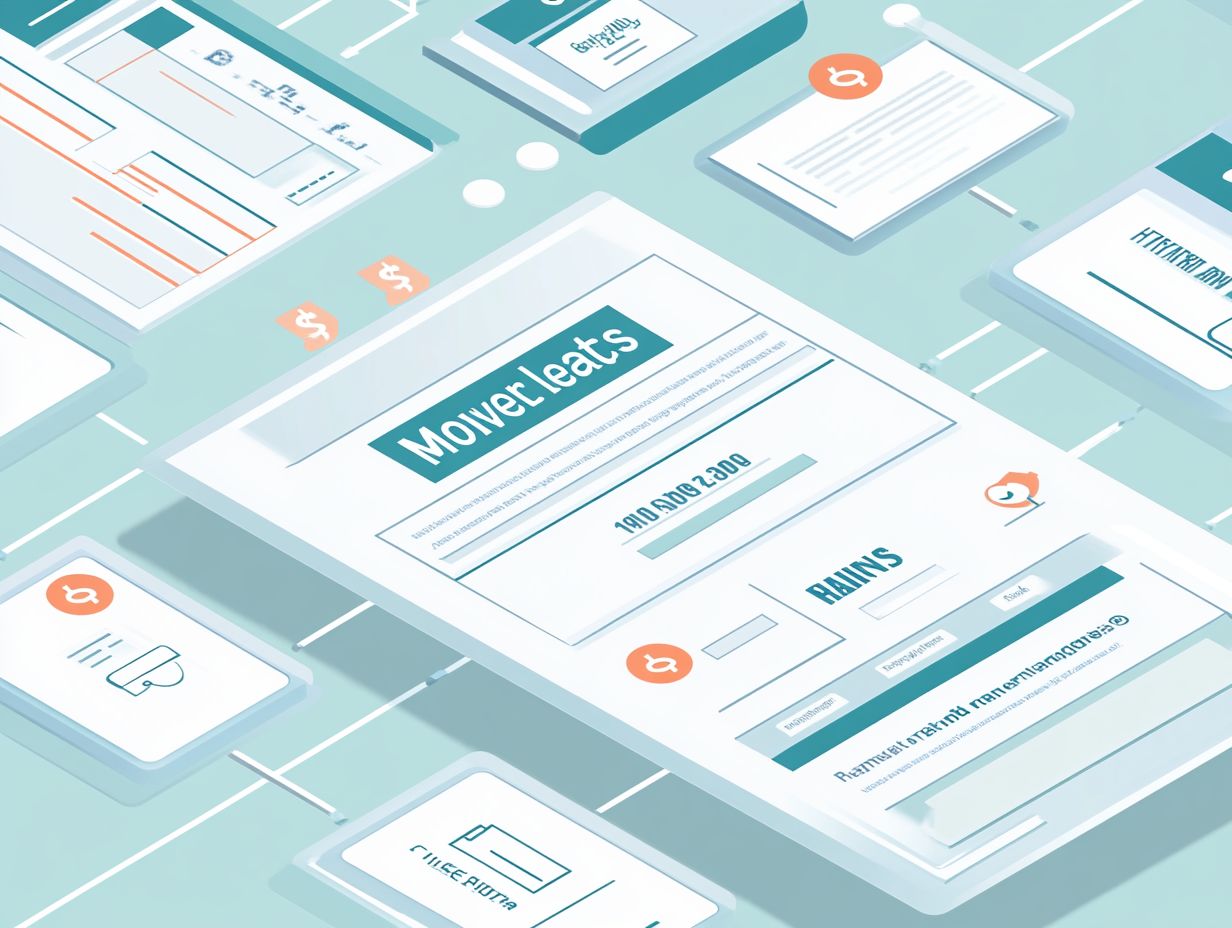
You ll encounter various types of lease agreements, each tailored to specific needs. The most prevalent options include operating leases, finance leases, and capital leases.
Each of these comes with its own unique structure and implications, influencing both lessees and lessors in important ways. Understanding these differences is crucial for making an informed decision.
Operating Leases vs. Capital Leases
Operating leases and capital leases are two primary categories of leasing arrangements, and they differ significantly in terms of asset transfer and their implications for financial accounting.
With operating leases, you typically don t gain ownership of the asset. In contrast, capital leases often confer more substantial rights, creating a more intricate accounting scenario.
This distinction is crucial for your financial statements, as it determines whether assets and liabilities appear on your balance sheet. This, in turn, influences financial ratios and agreements to maintain certain financial ratios.
According to ASC 842 guidelines, you ll classify leases based on criteria like ownership transfer, present value, and the asset’s economic life. This leads to various impacts on your income statements and cash flows.
Grasping these differences is essential for any organization aiming to refine its financial strategies and ensure compliance.
Common Lease Payment Terms
Common lease payment terms encompass vital elements like rent, security deposits, and other fees. All of these are essential for understanding the complete financial obligations tied to a lease.
Understanding these components is crucial for navigating your lease agreement effectively.
Rent, Security Deposit, and Other Fees
Rent, security deposits, and various fees are essential components of lease agreements that can dramatically influence the overall costs you’ll incur as a lessee.
Understanding how these elements interact is vital during negotiations. They can directly affect the financial viability of your lease. For example, the base rent establishes your initial monthly expense. Meanwhile, security deposits serve as a safety net for the lessor, often requiring upfront funds.
Additional fees, like maintenance or administrative charges, can quietly accumulate over time, contributing to your total expenditure. Potential leasing incentives such as reduced rent for the initial months or waived fees can offer substantial savings and impact your long-term budgeting strategy.
Act now to evaluate these factors and secure a lease that benefits you!
Understanding the Lease Payment Schedule
The lease payment schedule is your roadmap to understanding what you owe! It meticulously details the timing and amounts of payments you are required to make. This schedule is essential for grasping your lease obligations and understanding how they will be reflected in your financial statements.
Breaking Down Monthly Payments
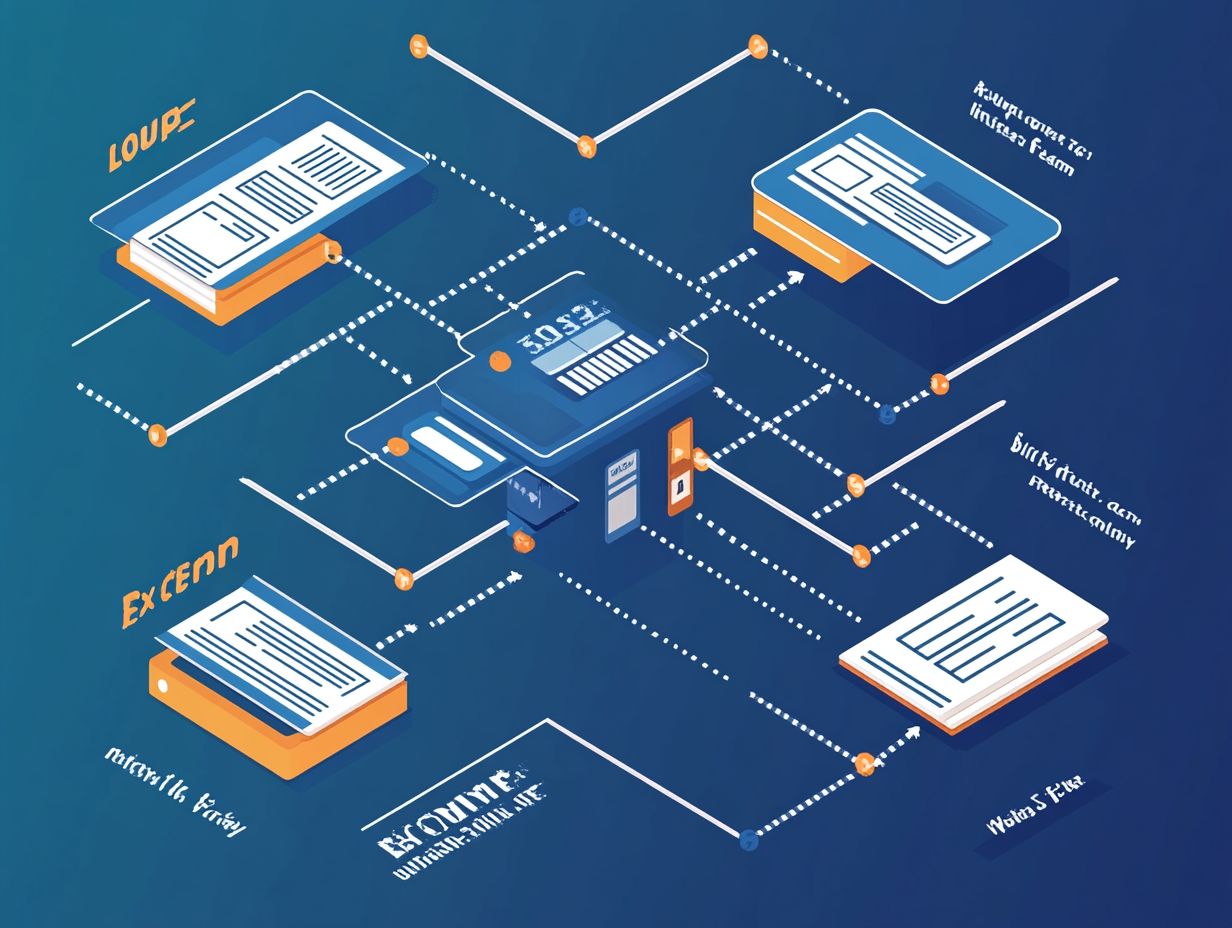
Breaking down your monthly payments is essential as a lessee. This allows you to apply the lease payment formula and establish consistent cash flow throughout the lease term.
Understanding this calculation enables you to manage your finances with precision. The formula usually involves dividing the total lease amount by the number of months in the lease, ensuring that each payment accounts for not just the principal but also any applicable interest rates and fees.
By grasping how your monthly obligations are determined, you can seamlessly incorporate this information into your budgeting process. This paves the way for more effective financial planning. This insight is crucial for evaluating whether a lease aligns with your overall financial strategy, helping you sidestep potential cash flow issues in the future.
Negotiating Lease Payments
Negotiating lease payments with skill can yield substantial financial advantages for you as a lessee. Effectively navigating this process allows you to secure the best possible deal, reduce your leasing costs, and meet your lease obligations with confidence.
Tips for Getting the Best Deal
To secure the best deal when negotiating lease payments, explore various strategies that leverage your credit score and potential lease incentives.
Understanding the full scope of leasing costs is crucial. It’s not just about the monthly payment; you also need to consider fees, interest rates, and the overall impact of your credit health.
Scrutinize your credit history. A higher credit score usually means lower interest rates and better terms.
Staying informed about current promotions can give you an edge in negotiations. Engage in open discussions with lenders regarding possible adjustments or flexible terms to align with your financial goals.
What Happens if You Miss a Lease Payment?
Missing a lease payment can carry significant repercussions. It may result in penalties and negatively impact your financial accounting records.
Stay alert to dodge these complications and keep your finances on track!
Consequences and Solutions
The consequences of missed lease payments can be quite severe, ranging from late fees to potential legal action.
When you or your business fail to meet lease obligations, you may quickly find yourself in a precarious financial situation.
Late fees can pile up rapidly, leading to increased costs that pressure your budget. Landlords may resort to legal remedies, potentially involving eviction or damage claims, complicating future leasing opportunities.
To navigate these challenging scenarios, establish clear communication with your landlord. Consider options like renegotiating payment terms or seeking temporary relief through financial counseling.
Creating a proactive budget that includes lease expenses can help ensure timely payments, safeguarding your financial health and preserving your leasing relationships.
Frequently Asked Questions
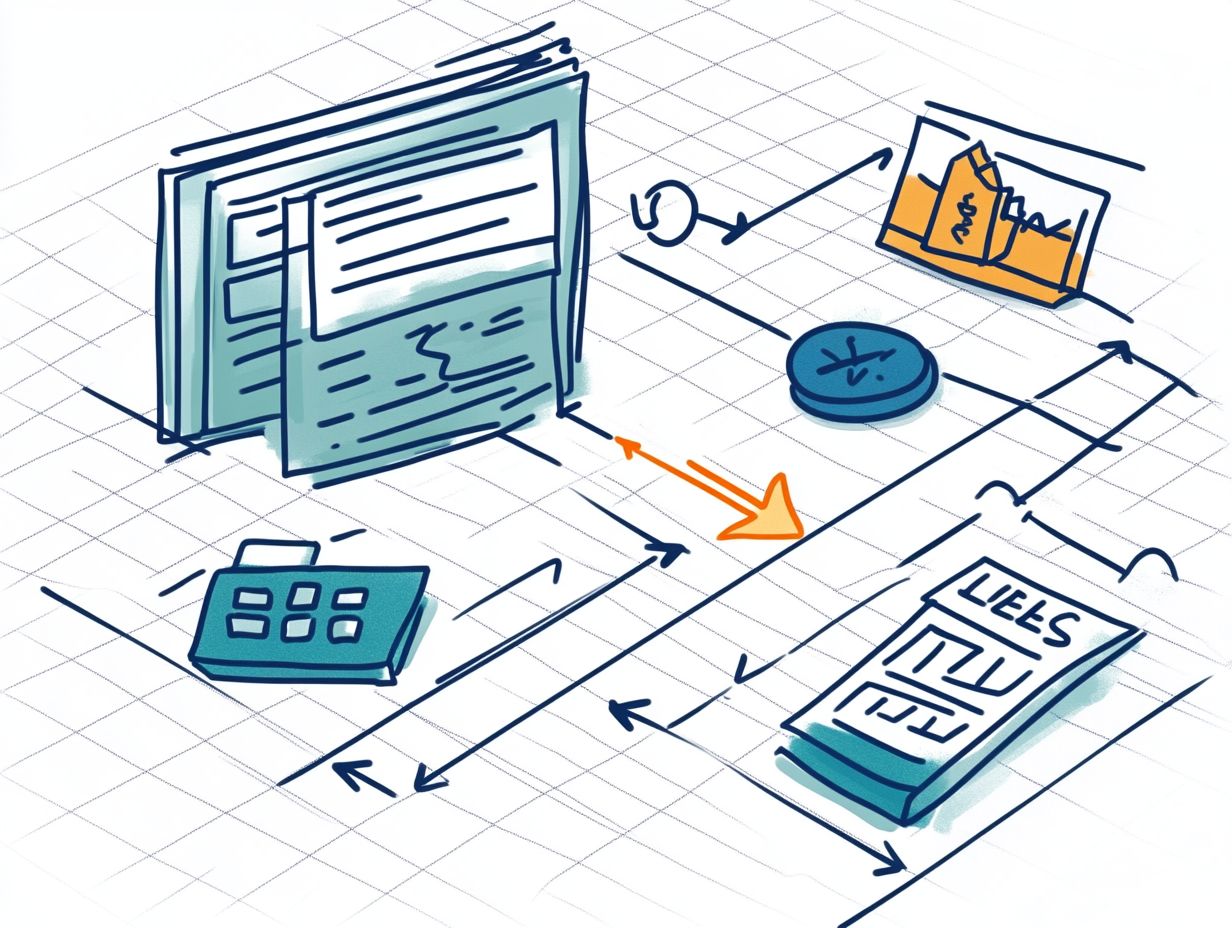
What is a lease payment?
A lease payment is a recurring payment made to a lessor by a lessee for the use of a property or asset for a specific period.
What types of lease payments are there?
There are two main types of lease payments: operating lease payments and capital lease payments.
Operating lease payments are usually for a shorter period and do not transfer ownership of the property or asset to the lessee. Capital lease payments are for a longer period and often lead to ownership of the asset at the end of the lease term.
How are lease payments calculated?
The calculation of lease payments depends on various factors, including the type of lease, the length of the lease term, and the terms of the lease agreement.
Generally, lease payments are calculated based on the property’s value, the interest rate, and any additional fees outlined in the lease agreement.
What is included in a lease payment?
A lease payment typically includes the base rent for the property or asset, additional fees outlined in the lease agreement, and any applicable taxes.
In some cases, a lessee may also be responsible for utilities and maintenance costs as part of their lease payment.
What happens if I miss a lease payment?
If a lessee misses a lease payment, they may incur late fees as outlined in the lease agreement.
It’s important to communicate with the lessor and make arrangements for late payments to avoid potential legal consequences.
Can I negotiate lease payments?
In some cases, it’s possible to negotiate lease payments with a lessor. This may involve discussing payment terms, fees, or the lease’s length.
Carefully review all terms before entering any lease agreement.

